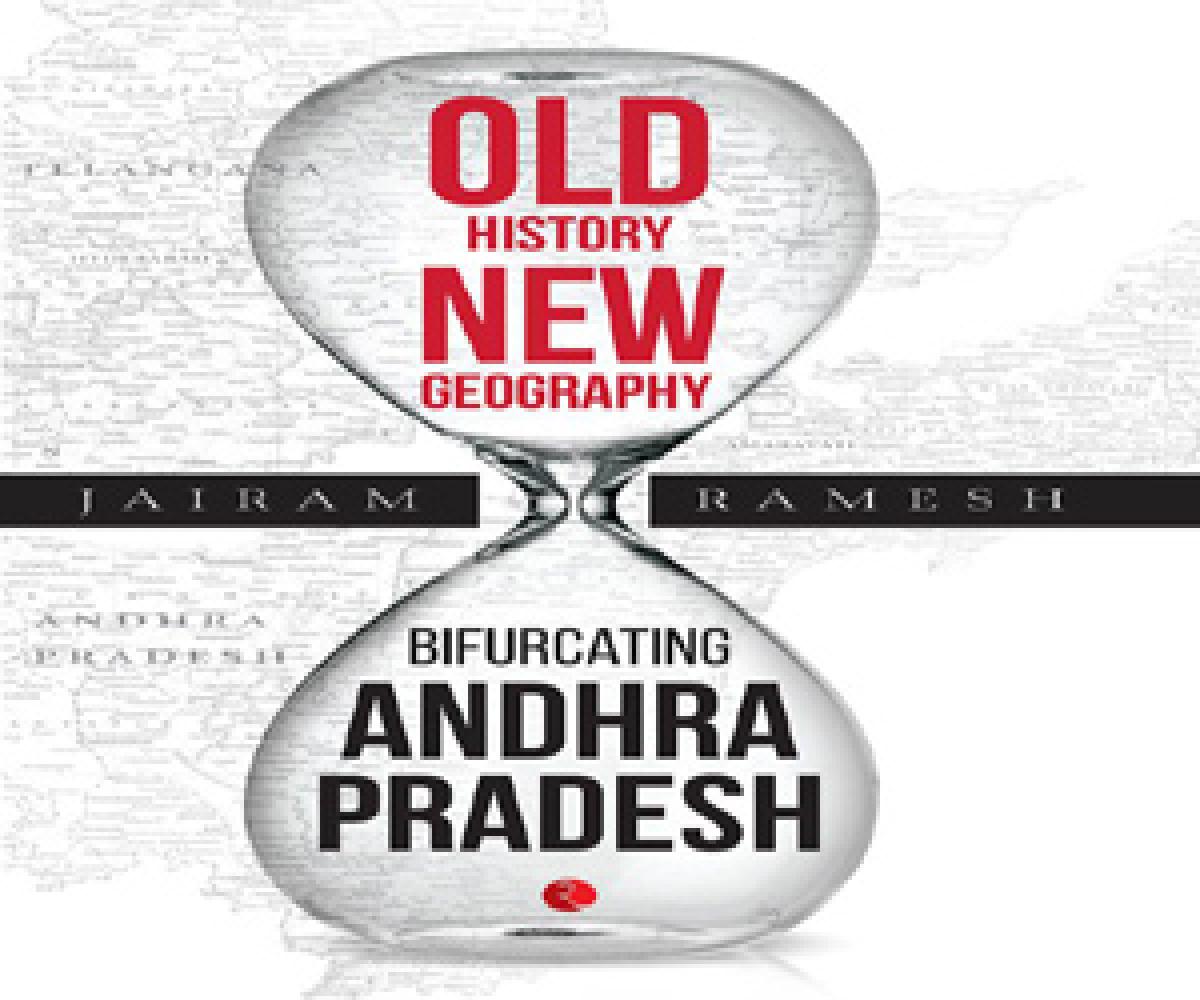Live
- Vision document historical, says Keshav
- YSRCP to boycott elections to WUAs
- Farmers led by YSRCP leaders stage protest against graft
- MLA Dhanpal reminds Cong of promise of gold for brides
- Dy CM Pawan hails Swarna Andhra@2047 vision document
- Ensure success of Mathematic Talent exam
- Atchannaidu expresses concern over fall in tomato price
- Goshamahal Welfare Assn petition Collector seeking withdrawal of Osmania Hosp plans at stadium
- Indiramma Housing scheme 4L applications received in RR dist
- 3 Indian students killed in Canada; India takes up issue of safety with Ottawa
Just In

It does not deal with the merits of the bifurcation of Andhra Pradesh, only with its mechanics. The reason for this is simple: I have no inside knowledge of the ‘why’ nor can I shed any new light on it over and above all of the speculation that already exists in public domain,” says Jairam Ramesh, former minister and member of the group of ministers (GoM) that studied the issue of bifurcation in d
It does not deal with the merits of the bifurcation of Andhra Pradesh, only with its mechanics. The reason for this is simple: I have no inside knowledge of the ‘why’ nor can I shed any new light on it over and above all of the speculation that already exists in public domain,” says Jairam Ramesh, former minister and member of the group of ministers (GoM) that studied the issue of bifurcation in detail and made recommendations to the government culminating in the bifurcation of Andhra Pradesh in February 2014.
Readers surely expect more about the ‘why’s than the ‘how’s in a book from an insider involved in the process and find his explanation baffling to say the least. While ‘Old History, New Geography’, offers a good account of the background of the creation of states after independence, the different phases in which new states emerged and the conditions that renewed the agitation for the new state of Telangana, it fails to explain why the actual bifurcation was so messy and the political leadership in Delhi failed to quell dissent and arrive at an amicable settlement.
The book provides a historical context on the formation of states after Independence beginning with the separation of the Telugu speaking people from the Madras Presidency (with details of rivalry between Rajaji and Tanguturi Prakasam thrown in) the formation of Andhra Pradesh with Telangana in 1956, the first agitation for a separate Telangana state in 1969, and political developments resulting in the creation of Telangana the 29th state of the country in June 2014.
The wheel had turned full circle in 58 years, says the author who prefers the word de-merger to the widely used word bifurcation. We also see a candid confession that Sonia Gandhi had hoped for a merger of the Telangana Rashtra Samithi (TRS) with the Congress just as Indira Gandhi had done with Marri Chenna Reddy’s Telangana Praja Samithi (TPS) during the first agitation. That Sonia lacks the political acumen of Indira Gandhi however do not find mention in the book and expectedly so. However, Ramesh distances himself from the timing of the decision merely stating that it was an unmitigated disaster for the Congress party.
The book takes the reader through a gamut of emotions, debates in the Parliament, unheard of protests including the use of pepper spray that shocked the Parliament, dissent within the party (including opposition from the then chief minister Kiran Kumar Reddy,) sharing of resources and Hyderabad, the main bone of contention between the two states.
What was the reason for writing this book?
Apart from bringing clarity on myths and misconceptions about the bifurcation, the author set out to tell the Telugus that he had tried to be fair to all concerned as member of the GoM. The third and most important reason seems to be that of providing an enduring contribution to the scholarship on contemporary politics and political history.
“It is a story of being fair to both sides under the most trying circumstances and with the knowledge that if both sides ended up being unhappy, the objective of being fair had indeed been fulfilled” the closing words in the book are indeed prophetic as one notes the reaction to the book.

© 2024 Hyderabad Media House Limited/The Hans India. All rights reserved. Powered by hocalwire.com







